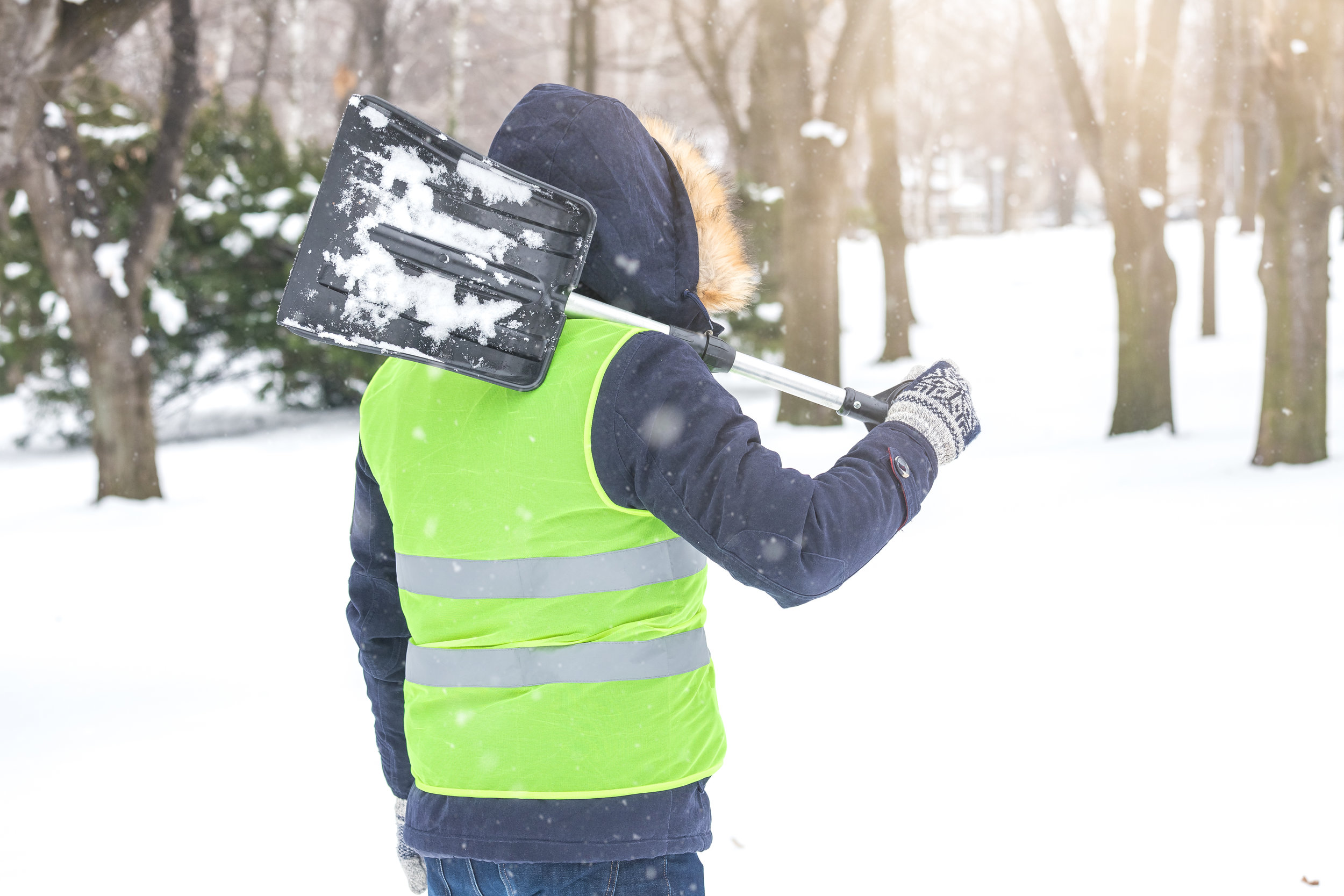On days when the air is cold, the wind is blowing, and the humidity is high or it’s raining, your clothing strategy is key to keeping you from getting a cold stress injury. Here are some tips for how to dress when the temperatures drop.
Layering lets you adjust your body’s temperature by putting on and removing items of clothing and maintaining an even comfort level as conditions or your exertion levels change. To dress for cold weather, you need three layers for maximum warmth and protection.
Base layer: Your long underwear needs to keep your skin as dry as possible.
Middle layer: Your fleece or puffy jacket needs to preserve as much body heat as possible.
Outer layer: Your rain gear needs to protect you from rain and wind.
Choosing your base/underwear layer
Warm skin starts with dry skin, so long underwear’s job is to wick perspiration away from you. Synthetic fabrics like polyesters are great at both wicking and drying. Wool is a good natural fiber option that holds its insulating abilities even when wet. Avoid cotton fabrics, as they do not retain their insulating abilities when they get wet.
Think about the fit. Wicking cannot occur in places where fabric is not touching skin, so you want a comfortably snug (not tight) fit everywhere.
Thickness or weight: Heavyweight makes sense for sub-freezing temps and low activity levels. Midweight is a good all-around choice. Lightweight is left to milder conditions.
Choosing your middle/insulating layer
This is the layer most people think about in cold conditions, so it’s not surprising that this layer’s job is to retain warmth. Insulating materials like fleece are a good start. Make sure your jacket is a heavyweight fleece. When you are working outdoors in serious cold weather conditions, then a puffy jacket/coat should come into play. Down coats and jackets are a good standard if you are not working in wet conditions. They lose their insulating ability when they get wet. Puffy jackets/coats with synthetic fills are a better option when conditions get damp.
Insulating thickness can be tricky because you can’t rely on thickness to indicate warmth level when insulation types differ. Temperature ratings on labels are not reliable because there are too many variables (wind, rain, activity level, etc.) You can eyeball 2 jackets with identical insulation specs though and conclude that puffier equals warmer.
Full coverage: Don’t just think about jackets/coats - save some love for the legs. Keep some insulated or fleece pants with you, so your lower half can stay as warm as your top half.
Choosing your outer layer (shell coat and pants)
This is our outer line of defense. Even though it’s often referred to as “rainwear”, this layer’s job is to shield the underneath layers from snow, sleet, rain, and wind. There are 3 important attributes to consider when choosing your outer layer.
Precipitation protection: A wicking base layer can’t keep your skin dry if moisture is soaking you from the outside. In winter you don’t want to sacrifice any warmth to evaporation cooling. Wear a shell that is “waterproof” rather than merely “water resistant”.
Breathable protection: Perspiration wicked by your base layer needs a way to escape. Wear a shell that is breathable, or moisture can build up inside it and soak you. You don’t need the most expensive GORE-TEX rainwear – any shell that is designated as “waterproof/breathable” should work fine.
Windchill protection: The good news is that any shell that is “waterproof” is also “windproof”.
Shell pants- Cold, wet ankles are no fun, so be sure your boot tops are covered. If your pants don’t cover your ankles, then consider wearing a pair of gaiters.
Keeping Your Head, Hands, and Feet Warm
To prevent extremities from getting cold, cover up everywhere. The warmest options in hats, gloves, and footwear do the same thing as layers elsewhere: wick, insulate, and block rain/wind.
Hats- Wool or synthetic beanies work well, and you can rely on your shell jacket/coat’s hood for rain coverage. Full-on winter hats will have insulation inside the shell material. Make sure your headwear covers your ears. If your face is uncomfortably cold, wear a balaclava.
Gloves- Fleece gloves provide basic warmth. Insulated gloves, especially ones with waterproof/breathable shells are better. Mittens are warmer than gloves, because they share finger warmth.
Boots- with thick non-cotton socks can provide warmth when conditions are merely cold, but not wet or snowy. Waterproof boots are the next step up. Winter boots, in addition to offering traction on snow and ice, will also include insulation.
A Warmer Coat- Think of this as a twist on “cold hands, warm heart”. If your heart is warm and toasty, then it has plenty of warm blood to pump out to the hands and feet. Choose a well-insulated waterproof winter coat.
Chemical Warming Packets- Add warmth by slipping hand and foot warmers inside your gloves and socks. They come in a variety of sizes.
Additional Layering Tips for Cold Weather
Don’t wait to adjust layers: Throw on a shell at the first sign of rain or wind and remove your insulating jacket the minute you start to sweat. Staying warm and dry is easier than warming up or drying out.
Cotton is a no-no in any layer: Set aside your love of cotton flannel (or anything cotton) because it soaks up moisture and takes forever to dry out. That is a recipe for hypothermia.
Layers should play well together: Middle and outer layers need to glide on and off. When they fit too tightly over the layers beneath them, adjustments become cumbersome and you risk constricting circulation. Purchase middle and outer layers that are big enough to provide another layer (that of air) between them. This layer of air stays warm and keeps you warmer.
Taking time to make some smart decisions about your winter clothing will keep your warm and toasty and safer this winter.


